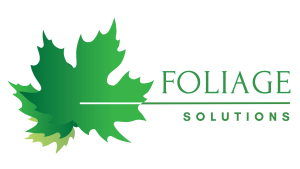Bringing Pages to Order
Bringing pages to order can seem effortless, not much to it.
It is hard to explain in layman’s terms all the rigorous and time-consuming work a professional Desktop publishing team does “backstage” just to improve the look and feel of a translated document.
Maybe if we take a different approach and compare the work of a professional mechanic, to a Desktop publishing (DTP) specialist, one will find astonishing similarities.
So why would you need any Desktop publishing service?

The process of dismantling and re-assembling parts of a car calls for an experienced mechanic.
Someone who can understand the entire function of a car and the role each part plays in making it function and achieve overall top performance.
The same can be said for Desktop publishing.
The task of a DTP specialist is to extract all or parts of a document, work on them, polish them and then re-assemble the translated parts, giving “flow” to translated pages.
The key to success is in planning and a detailed analysis (the two most valuable DTP skills).
With this in mind, without a well-planned DTP workflow incorporated in the entire translation process, your pages will suffer.
What are the main stages in Desktop publishing?
The four main stages in Desktop publishing are:
1. What is analysis and planning stage?
Analysis and planning entail proper reading and understanding of the client’s instructions on what needs to be done, by when and for what purpose.
An overview of the documents will determine the scope of the project and allow for proper questions and concerns to be raised.
Having more than one solution to a certain problem, at this stage, is the key.
Different formats call for different approaches.
Newspapers, magazines, brochures, and other marketing materials for printing purposes are handled differently than on-line publications.
Technical manuals and patents have specific layout guidelines while legal documents require extra care with logos, certified stamps, and signatures.
Certain translated materials must also be visually in line with cultural nuances. This is where the localization experts have their say.
After translation and document layout, the work must be proofread and checked. This calls for expertise of other team members.
Therefore, a well-planned workflow matches the skills of the necessary people with the tasks that need to be accomplished.
2. What is file preparation?
File preparation is essential for the CAT (Computer Assisted Translation) tool to correctly process the text to be translated.
Proper formatting (checking for any hard/soft returns, line breaks, double spaces, broken sentences, page breaks, etc.) allows for proper text segmentation which ensures accurate translation and assists in building quality databases of previous translations (translation memories) and glossaries.
File preparation also helps facilitate layout after translation by permitting the CAT tool to correctly maintain the layout of the prepared document and not propagate layout issues across all project languages.
Quite often, non-editable (cannot be selected) text from one format needs to be extracted and placed in another editable (selectable) format.
Non-editable images such as diagrams, and complex graphics, like the ones found in technical manuals or engineering drawings might have text that needs to be extracted and translated.
The handling of un-editable “bits & pieces” mentioned above plays a vital role in the proper formatting of the document.
3. What is layout?
After translation, the DTP specialist goes back over the document formatting the translated text and any images with text that required translation, masterfully “re-fabricating” the original work (found in the source file), thereby making the translated document (target file) look like a spitting image of its master, all the while considering any specific typographic standards of the target language(s).
The aim in this stage is to make sure all text fits properly into the layout after translation.
This process requires the layout and font size to be adjusted to take into account either the expanded or contracted target text, depending on the source and target languages in question.
4. What is post layout proofreading?
Before the client receives its final copy, the entire document needs to be checked once again.
These checks include making sure the text content, images, layout match between source and target and meet client specifications and the overall usability of the final material.
As you can see, a lot of work hides behind those four words “bringing pages to order.”
DTP specialists make it seem effortless, but they play a vital role in bringing the entire translation process together to produce the translated document(s).
They are the visual masters that aim to always achieve great expectations.
READY TO BRING YOUR PAGES TO ORDER?
Let’s layout your multilingual visuals, the right way.
